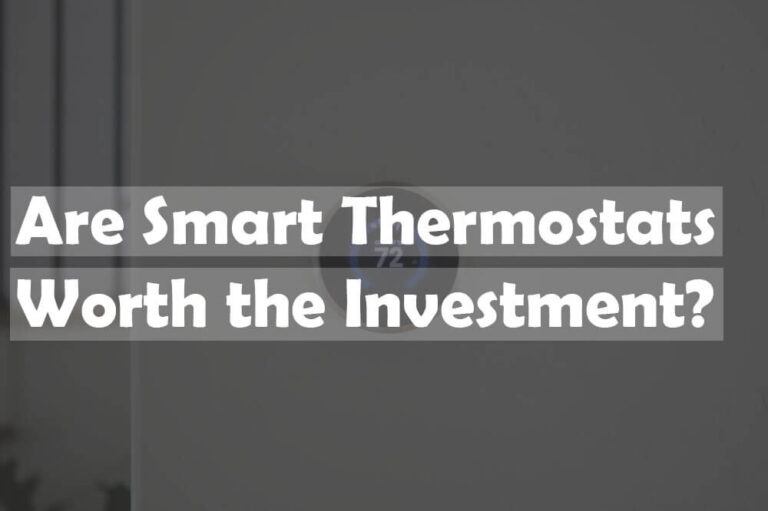What Features Should I look for in a Smart Thermostat?
Investing in a smart thermostat can significantly enhance your home’s energy efficiency, comfort, and convenience. These intelligent devices learn your habits, automatically adjust temperatures, and help reduce energy consumption. However, with the numerous options available on the market, it can be challenging to determine which features are essential for your needs. In this guide, we will explore key features to consider when selecting a smart thermostat, ensuring you make an informed decision that aligns with your lifestyle and budget.
Understanding Smart Thermostats
In recent years, smart thermostats have become essential for modern, energy-efficient homes. They offer convenience, cost savings, and sustainability. However, selecting the right one can be challenging, given the multitude of options available. This article explores key features to consider when choosing a smart thermostat.
Energy Efficiency
First and foremost, energy efficiency plays a crucial role in smart thermostats. They save money by optimizing heating and cooling. Also, they reduce energy consumption, benefiting the environment. Smart thermostats achieve this through advanced algorithms. These algorithms learn homeowners’ temperature preferences and schedules.
User-Friendly Interface
A user-friendly interface is another important feature to look for. A well-designed interface simplifies software navigation. Consequently, it streamlines setting adjustments. Many smart thermostats offer touchscreens for ease of use. Furthermore, clear, intuitive layouts enhance user experience.
Connectivity Options
Additionally, consider connectivity options when choosing a smart thermostat. Most models connect to Wi-Fi. This connection allows for remote control via smartphone apps. Moreover, some thermostats support Bluetooth connections for additional flexibility. Connectivity ensures home temperature control from anywhere.
Smart Home Integration
Smart home integration greatly enhances functionality. Look for compatibility with popular smart home systems, like Amazon Alexa or Google Home. This integration allows seamless voice control of your thermostat. Subsequently, it contributes to a fully automated home environment.
Geofencing Capabilities
Geofencing capabilities are another valuable feature. Geofencing uses GPS or RFID signals to create virtual boundaries. This technology detects when you leave or approach home. As a result, thermostats automatically adjust settings for optimal comfort and efficiency.
Check also – Best Smart Thermostats Reviews
Learning Capabilities
Learning capabilities significantly impact thermostat performance. These thermostats adapt to user behavior over time. This adaptability enables automatic temperature adjustments based on your habits. As a result, they provide convenience and maximize energy savings.
Customizable Scheduling
Customizable scheduling is an essential feature for optimal control. Smart thermostats allow users to program temperature changes. Typically, these changes align with personal routines. As a result, customized settings can improve home comfort and reduce energy bills.
Humidity Control
Humidity control is an often-overlooked but valuable feature. Smart thermostats with this function monitor and adjust humidity levels. Maintaining optimal humidity prevents mold growth. Additionally, it enhances overall comfort and air quality.
Zoning Capabilities
Zoning capabilities allow for temperature control across multiple areas. This feature is particularly useful for larger homes. It enables setting different temperatures in various rooms. Consequently, zoning optimizes comfort without wasting energy.
Compatibility with HVAC Systems
When choosing a smart thermostat, ensure compatibility with your existing HVAC system. Not all models work with every system. Before purchasing, consult professional technicians. They ensure seamless integration with your heating and cooling setup.
Energy Monitoring
Energy monitoring features help track energy consumption. Many smart thermostats provide detailed reports of usage patterns. Analyzing these reports identifies areas for potential savings. Consequently, informed decisions lead to energy-efficient practices.
Alerts and Reminders
Alerts and reminders offer added convenience. Smart thermostats can notify users of maintenance needs, like filter changes. Timely reminders keep HVAC systems running efficiently. Additionally, alerts inform users of sudden temperature changes.
Motion Detection
Motion detection technology improves temperature regulation. Thermostats equipped with motion sensors adjust based on room occupancy. This function ensures comfort while reducing energy usage in unoccupied spaces.
Check also – Best Thermostats for Heat Pump Reviews
Customizable Display
A customizable display personalizes thermostat visibility. Certain models allow users to choose themes or screen savers. Unique displays improve aesthetics and enhance user interaction.
Remote Sensor Support
Finally, remote sensor support allows monitoring temperature across multiple rooms. With remote sensors, ensure balanced comfort throughout your home. They work by sending data to the thermostat, adjusting for consistent temperatures.
Conclusion
Selecting the ideal smart thermostat requires careful consideration. By exploring features such as energy efficiency, connectivity, and smart home integration, you can make an informed choice. Ultimately, investing in a smart thermostat enhances home comfort, saves energy, and reduces costs in the long run.






